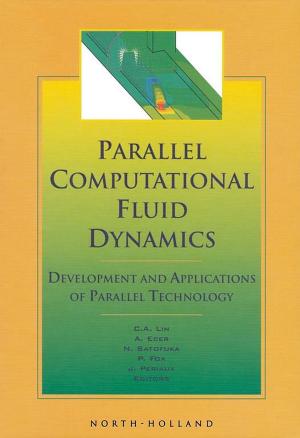Lean Biomanufacturing
Creating Value through Innovative Bioprocessing Approaches
Nonfiction, Science & Nature, Science, Biological Sciences, Biotechnology, Technology| Author: | Nigel J Smart | ISBN: | 9781908818409 |
| Publisher: | Elsevier Science | Publication: | October 31, 2013 |
| Imprint: | Woodhead Publishing | Language: | English |
| Author: | Nigel J Smart |
| ISBN: | 9781908818409 |
| Publisher: | Elsevier Science |
| Publication: | October 31, 2013 |
| Imprint: | Woodhead Publishing |
| Language: | English |
With decreasing profit margins, increasing cost pressures, growing regulatory compliance concerns, mounting pressure from generic drugs and increasing anxiety about the future of healthcare reimbursement, pharmaceutical manufacturers are now forced to re-examine and re-assess the way they have been doing things. In order to sustain profitability, these companies are looking to reduce waste (of all kinds), improve efficiency and increase productivity. Many of them are taking a closer look at lean manufacturing as a way to achieve these goals. Lean biomanufacturing re-visits lean principles and then applies them sympathetically - in a highly practical approach - to the specific needs of pharmaceutical processes, which present significantly different challenges to more mainstream manufacturing processes. A major goal of the book is to highlight those problems and issues that appear more specific or unique to biopharmaceutical manufacturing situations and to provide some insights into what challenges are the important ones to solve and what techniques, tools and mechanisms to employ to be successful.
Following an introduction to lean biomanufacturing, the book goes on to discuss lean technologies and methods applied in biomanufacturing. Later chapters cover the creation and implementation of the Transition Plan, issues facing the biopharmaceutical industry, creating a lean approach towards biopharmaceutical processes and the contribution of simulation models in developing these processes. The final chapter covers examples of new technology innovations which help facilitate lean biomanufacturing.
- A focus on the issues associated with the application of lean principles to biomanufacturing
- Practical examples of factors which can affect biopharmaceutical processes
- Coverage of key factors which require integration to run an efficient biopharmaceutical process
With decreasing profit margins, increasing cost pressures, growing regulatory compliance concerns, mounting pressure from generic drugs and increasing anxiety about the future of healthcare reimbursement, pharmaceutical manufacturers are now forced to re-examine and re-assess the way they have been doing things. In order to sustain profitability, these companies are looking to reduce waste (of all kinds), improve efficiency and increase productivity. Many of them are taking a closer look at lean manufacturing as a way to achieve these goals. Lean biomanufacturing re-visits lean principles and then applies them sympathetically - in a highly practical approach - to the specific needs of pharmaceutical processes, which present significantly different challenges to more mainstream manufacturing processes. A major goal of the book is to highlight those problems and issues that appear more specific or unique to biopharmaceutical manufacturing situations and to provide some insights into what challenges are the important ones to solve and what techniques, tools and mechanisms to employ to be successful.
Following an introduction to lean biomanufacturing, the book goes on to discuss lean technologies and methods applied in biomanufacturing. Later chapters cover the creation and implementation of the Transition Plan, issues facing the biopharmaceutical industry, creating a lean approach towards biopharmaceutical processes and the contribution of simulation models in developing these processes. The final chapter covers examples of new technology innovations which help facilitate lean biomanufacturing.
- A focus on the issues associated with the application of lean principles to biomanufacturing
- Practical examples of factors which can affect biopharmaceutical processes
- Coverage of key factors which require integration to run an efficient biopharmaceutical process















